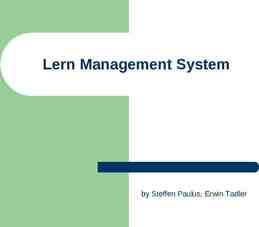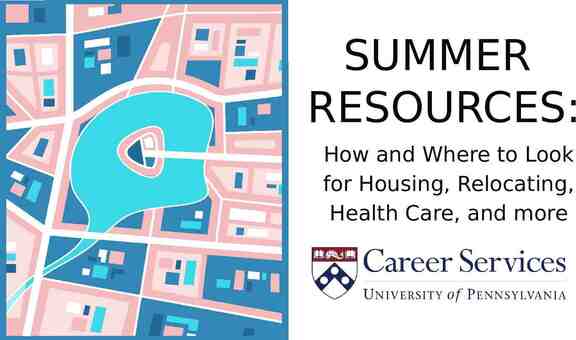CRISIS SERVICES IN NORTH CAROLINA For children and adolescents
22 Slides2.35 MB
CRISIS SERVICES IN NORTH CAROLINA For children and adolescents with Autism Spectrum Disorder Caroline Kraft, MA, RN April 2018
Children and adolescents with Autism Spectrum Disorder (ASD) in North Carolina, who are experiencing a crisis, are often underserved and require additional support Lack access because of limited investment in public special education, Medicaid waivers, supportive housing, or other federal and state-funded disability services Insufficient number of programs with staff who utilize or are trained in evidencebased practices for autism, including schools and hospitals Limited specialty crisis services that are not widely available across the State Lack of understanding by families, individuals, and professionals about how the system works and where to go for help Multiple visits to emergency rooms and out-of-home placements only marginally maintain stabilization. Little follow-up or long-term services initiated after a crisis Focus on punishment, suspensions, or legal system intervention rather than behavioral intervention
Diagnostic and Statistical Manual of Mental Disorders, 5th Edition (DSM-5) for Autism Spectrum Disorder A. Persistent deficits in social communication and social interaction across contexts, not accounted for by general developmental delays – Reduced social imitation and response. Deficits in understanding and use of nonverbal communication. Problems with social awareness and insight, as well as with the broader concept of social relationships B. Restricted, repetitive patterns of behavior, interests, or activities – May have atypical speech, movements, and play. Preoccupations with objects or topics. Rituals and resistance to change. May have atypical sensory behaviors C. Symptoms must be present in early childhood (but may not fully manifest until social demands exceed limited capabilities) D. Symptoms together limit and impair everyday functioning
What is a crisis? As defined by the Merriam Webster’s Collegiate Dictionary (2018) – An emotionally significant event or radical change of status in a person’s life – An unstable or crucial time or state of affairs in when a decisive change is impending; especially: one with the distinct possibility of a highly undesirable outcome – A situation that has reached a critical phase
Major themes found in autism that lead to a crisis DEMANDS SUBJECTIVE APPRAISSAL Child behavior Hopelessness Life challenges Extreme stress Family problems Health problems Child emotional problems EXTERNAL RESOURCES School stress Lack of support INTERNAL CAPABILITIEIS Emergency services Failed coping Lack of finances Functional impairment Resource depletion
Examples of what you might hear from families Demands are too great – “My child is ill has seizures or needs surgery” – “My spouse and I are disabled, and we have situations that lead to imminent physical or emotional collapse” – “My adolescent son tried to bite me and ended up on the floor banging his head. I’m afraid to let him back in the house” – “My child is depressed and self injures” – “There’s always lots of trouble at school and I get frequent phone calls from school/summer daycare” – “Things are falling apart at once. This is not the life I planned for my child”
Diminished internal capabilities – – – – “I can’t cope with life’s challenges” “I am tired, I’ve been doing this for a long time” “My child shuts down because of a stressor and refuses to talk to us” “My child can’t function (unable to get out of bed, cook, clean, be independent)”
Subjective appraisal – – – – “I am negative, frustrated, and anxious” “I am not acting calmly or reasonably with my child or with other family members/friends/support system” “I feel pessimistic about my child’s future” “My son is getting to a place where he feels he would be better off dead. How am I supposed to cope with that?”
Lack of external resources – – – – – – “I have no one to take my child out so I can get a break” “Friends and family don’t want to come over to ‘bother us’ or observe or be part of our distress” “I fear losing my job or respite funding and then I can’t support my family” “There is a lack of resources at school, through Medicaid waivers, supportive housing, or other federal and state-funded disability services” “I don’t know who to contact for help, how the system works, or where to go for help” “A trip to the emergency department didn’t really help correct my child’s behavior”
Weiss, J.A., Wingsiong, A., & Lunsky, Y. (2014). Defining crisis in families of individuals with autism spectrum disorders. Autism, 18(8), 985-995. doi: 10.1177/1362361313508024
When families should seek emergency care Aggression or self-injury become recurrent risks to the individual, family or staff Unsafe behaviors, such as elopement and wandering, cannot be contained A threat of suicide is made An individual presents with persistent change in mood or behavior, such as frequent irritability or anxiety The family can no longer care for the individual at home In case of emergency, call 9-1-1. Always take suicide threats seriously!
For 11-year-old in ER, The Wait for a Psych Bed is 10 Days In the news UNC Health Care Spokesman Tom Hughes said “that behavioral health needs are a growing concern in North Carolina as patients and their families often have no access to community solutions. This can result in large numbers of patients seeking treatment in emergency By Taylor Knopf Calling the police to escort his 11-year-old son to the emergency department was one of the hardest decisions Michael Harrison ever had to make. Liam has autism and was out of control. At school, he escaped through a window and three men were trying to bring him back. His family knew they needed to seek professional
Efforts in North Carolina to address crisis situations North Carolina Department of Health and Human Services (NC DHHS) established a Crisis Solutions Coalition to help expand existing solutions (walk-in crisis centers, telepsychiatry, Crisis Intervention Teams (CITs), care coordination with Managed Care Organizations (MCOs)) Recent funding of NC START, now available for children ages 6-18 Mobile crisis units Murdoch Developmental Center – TRACKS and PATH for longer term, facility-based respite and behavior intervention Autism Society of North Carolina (ASNC) supported by NC DHHS to continue to support families
NC Crisis Solutions Coalition is focusing on four main areas on a crisis services continuum Prevention planning – Person centered crisis planning and intervention plan – Wellness recovery action plan – Information about psychiatric advance directives Early intervention – Links to NC Start and Crisis Intervention Hotline – Information on the involuntary commitment process (IVC) Response – Mobile crisis teams, crisis walk-in clinics, hospital emergency departments Stabilization – Crisis respite and housing
North Carolina Systemic, Therapeutic Assessment, Resources and Treatment (NC START) Crisis prevention and intervention for individuals with a diagnosis of Intellectual/Developmental Disability (I/DD) and complex behavioral or mental health needs Crisis plans are written for individual – “a user manual for the individual” Mental health professionals provide training on crisis plans and model preventative strategies to support families or staff in residential placement Used as a preventative strategy, NOT during imminent crisis
Mobile crisis services Short-term, non-medical crisis response for stabilization and intervention Initial support and triage via telephone and mobile crisis team visit if necessary Assessment and management of crisis until it is resolved Referral for appropriate follow-up services Supportive, collaborative crisis planning Consultation/advocacy with existing supports and services
Murdoch Developmental Center in Butner, North Carolina TRACK (Therapeutic Respite Addressing Crisis for Kids) serves children ages 5 through 17 who have intellectual disabilities and/or autism spectrum disorders, serious behavioral challenges and are in behavioral crisis. The length of stay is between 3-45 days. PATH (Partners in Autism Treatment and Habilitation) serves children ages 6 through 16 with autism spectrum disorder and serious behavioral challenges. The length of stay is up to two years.
Autism Society of North Carolina (ASNC) Connect families with Autism Resource Specialists – professionals with expertise in autism and NC resources Family-peer support programs Professional and family education Law-enforcement training Respite services Social recreation programs
Ideas for future improvement 1. Adequate funding for autism specific crisis services such as NC START and Murdoch’s specialty programs. More staff needed to work in rural communities 2. Training of professionals to work with individuals with autism: school staff, health care providers, hospitals, departments of social services, law enforcement 3. Comprehensive, multi-system case management for families to coordinate with insurance, managed care, providers, DSS, the legal system, and schools. This is a full-time job for families to manage and agencies often to “talk to each other” 4. Family and individual peer support from other people who have lived through similar circumstances
References Alliance Behavioral Healthcare. (2017). Mobile crisis services. Retrieved from https://www.alliancebhc.org/consumers-families/crisis-and-access/mobile-crisis-services/ Autism Speaks. (2012). What might I need to know about managing a crisis situation. Retrieved from https://www.autismspeaks.org/sites/default/files/section 6.pdf Crisis Solutions North Carolina. (2015). Local community solutions. Retrieved from http://crisissolutionsnc.org/local-community-solutions/ Knopf, T. (2017, October 17). For 11-year-old in the ER, the wait for a psych bed is 10 days. North Carolina Health News. Retrieved from https://www.northcarolinahealthnews.org/2017/10/17/for-11year-old-er-wait-for-psych-bed-10-days/ Mahan, J., & Erb, K. (2018). Current crisis options in North Carolina. Spectrum, Autism Society of North Carolina, 34(1), 6-7. Merriam-Webster Collegiate Dictionary. (2018). Crisis. Retrieved from https://www.merriamwebster.com/dictionary/crisis North Carolina Health and Human Services. (2018). Murdoch developmental center. Retrieved from https://www.ncdhhs.gov/divisions/dsohf/murdoch-developmental-center-0 University of Washington Medical Center. (2018). DSM-5 Autism Spectrum Disorder. Retrieved from https://depts.washington.edu/dbpeds/Screening%20Tools/DSM-5%28ASD.Guidelines %29Feb2013.pdf. Weiss, J.A., Wingsiong, A., & Lunsky, Y. (2014). Defining crisis in families of individuals with autism spectrum disorders. Autism, 18(8), 985-995. doi: 10.1177/1362361313508024
This project was supported by the Health Resources and Services Administration (HRSA) of the U.S. Department of Health and Human Services (HHS) under M01HP31370, UNC-PrimeCare, 1,920,000.00, 100% financed with governmental sources. This information or content and conclusions are those of the author and should not be construed as the official position or policy of, nor should any endorsements be inferred by HRSA, HHS or the U.S. Government.



























